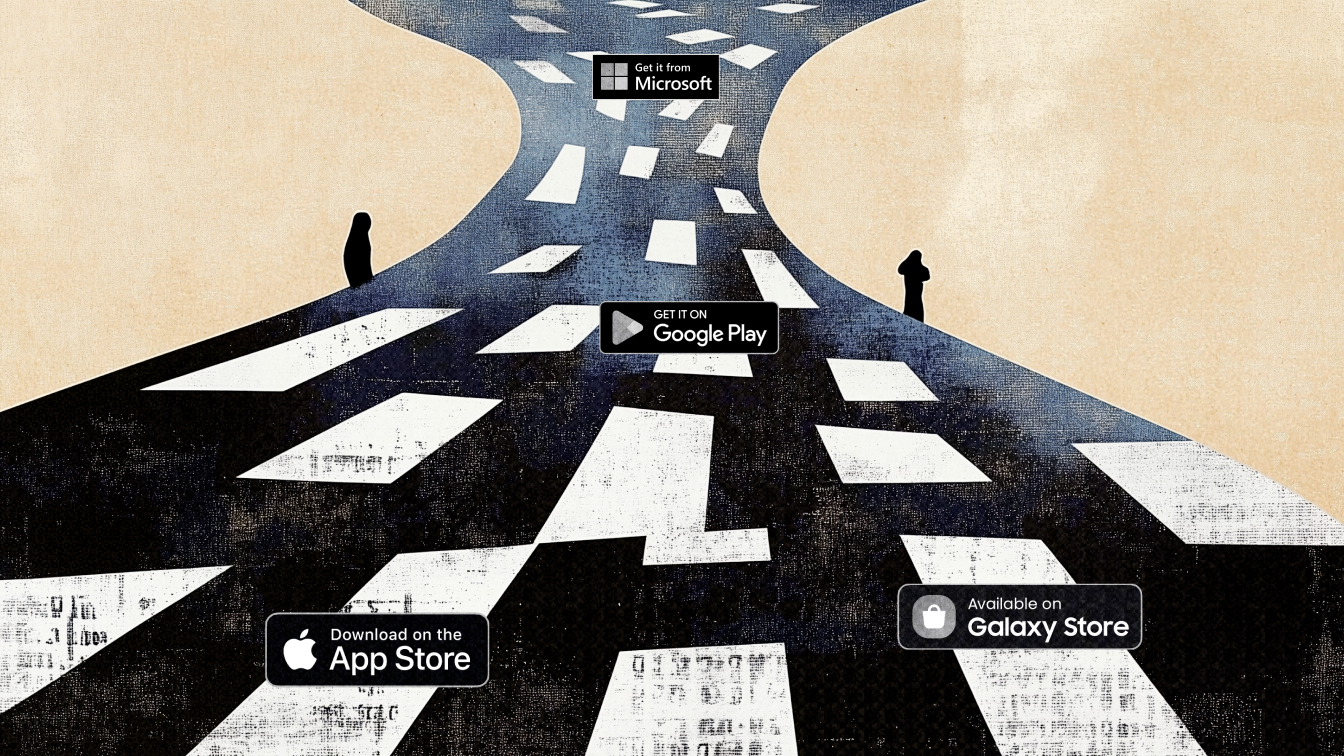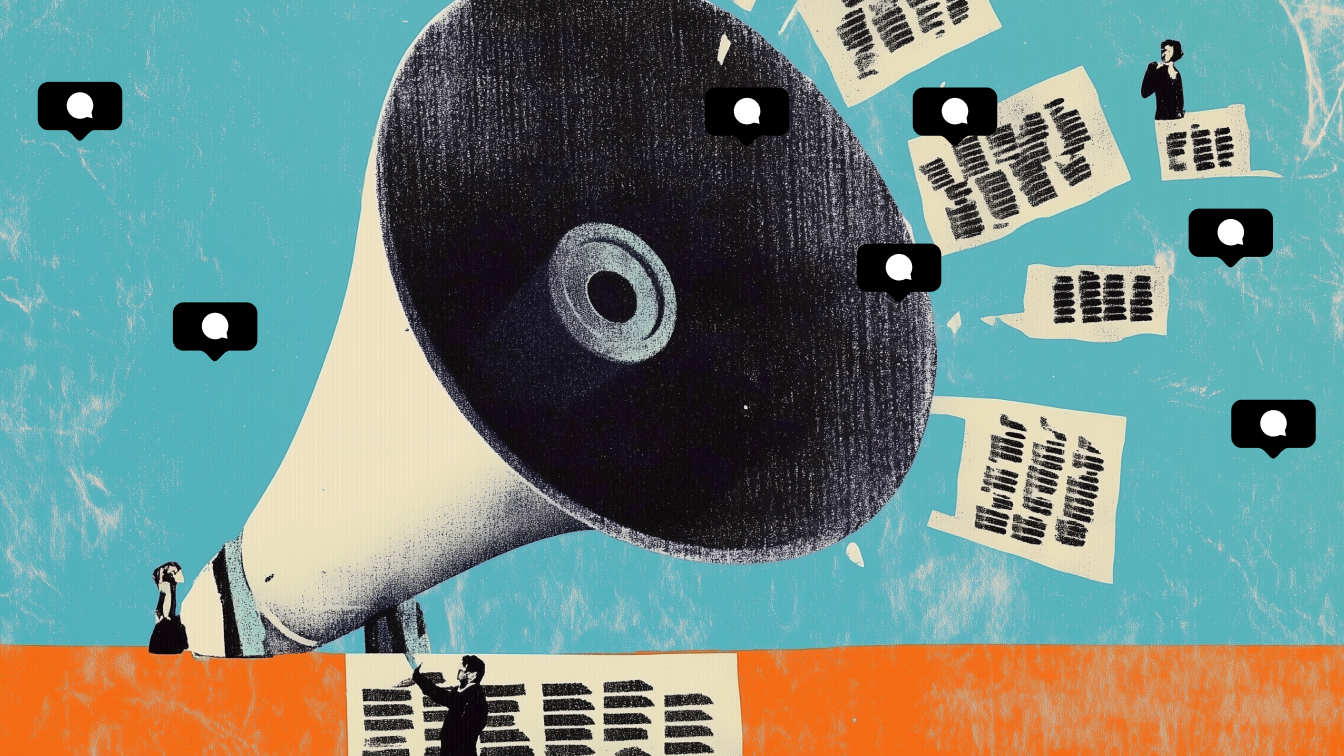How to Quit Social Media in 5 Easy Steps

If you’re reading this, that’s a good sign. You’re entertaining an escape. Whether it’s LinkedIn’s endless parade of self-congratulations, X’s battlefield of bad takes, or Instagram’s curated envy-fest, social media has you in its grip. The attention economy is thriving, and you’re one of its top investors. It’s high time we fix that. Ready?

● Step 1
Admit You Have a Problem
Let’s do some math. According to GWI’s 2024 report, an average user spends about 143 minutes per day on social media. That’s 35 days a year lost to under-rehearsed dance routines, slow-motion matcha pours, perfectly folded laundry tutorials, conspiracy theories about Timothée Chalamet’s cat, video confessions from strangers sitting in their cars (why are they always sitting in their cars?), or whatever it is the algorithm decides you should care about.
If you spend too little time engaging, the platforms will come knocking. Push notifications, fine-tuned to exploit your FOMO, will remind you of what you’re “missing:” a friend’s vacation post you don’t care about, a DM you don’t want to open, a trend you’re too late to jump on. It’s not subtle. You’re Pavlov’s dog; they’ve got the bell.
Social media makes for a perfect diversion, but its design principles are not the core of the trouble. You are. Blaise Pascal, a French mathematician who had never seen a meme, called it centuries ago: “All of humanity’s problems stem from man’s inability to sit quietly in a room alone.” In Pascal’s time, diversions had a rustic charm: hunting, gambling, maybe a polite duel before dawn. Now, they’ve been industrialized, optimized to death, and wrapped in friendly UX. Pascal’s diversions were human nature; ours are human nature with venture capital backing. Sitting quietly in a room alone? We both know that’s not happening.
Diagnosis
You’re not addicted to social media. You’re addicted to being human.

● Step 2
Confront the Algorithm
Remember when feeds were chronological? Good times. Enter the algorithm: an omnipotent curator that swapped your friend’s poorly lit (but priceless) selfies for content from seemingly random blue-checkmark “influencers.” Back when Twitter had a bird logo, they bragged about it: “Our recommendation algorithm distills the roughly 500 million Tweets posted daily into a handful of top Tweets.” Translation: the doomscrolling machine decides what matters.
Fast forward to 2025, and X—Twitter’s chaos-amplified alter ego—has only upped the ante. Under Elon Musk’s stewardship as self-proclaimed “free speech absolutist” and full-time provocateur, the platform thrives on its own unpredictability, with outrages and pile-ons taking the lead. Musk admits it himself: a couple of weeks ago, he even promised to introduce an update reducing negativity and “maximizing unregretted user-seconds.” Translation: Your emotional state is a test subject, and even the tech overlords are not pretending otherwise.
Over at Meta, the shift has been equally messy. In a recent overhaul of its moderation policies, the company scrapped its fact-checking in favor of “community notes,” a crowdsourced strategy that might as well be subtitled: Good luck out there. The company’s CEO, Mark Zuckerberg, framed this as a “trade-off”—more “freedom,” but also more misinformation. Harmful content, whether it’s anti-science rhetoric or casual hate speech, will no longer face the same scrutiny. As Zuckerberg put it: “It means we’re going to catch less bad stuff, but we’ll also reduce the number of innocent people’s posts and accounts that we accidentally take down.” Translation: enjoy the misinformation buffet, just don’t sue us.
The rules of engagement keep shifting in the name of “improvement,” and the only constant is the intention: to turn your time into revenue.
Mantra
Accept all cookies.

● Step 3
Explore New Platforms
With TikTok officially banned in the U.S. and other platforms crumbling under their own weight, the instinct is to find the next thing. Turns out, networks built on connecting strangers are remarkably easy to replace.
Enter TikTok’s new-found sibling, Xiaohongshu. The Chinese app, whose name loosely translates to “Red Note” or “Little Red Book,” has seen a surge of downloads from Americans seeking their dopamine fix elsewhere. Its infinite scroll is eerily familiar, and its navigation—a blend of Mandarin and English—is just disorienting enough to feel new.
Then there’s the heir-apparent to X, BlueSky. Promising no ads, no conflict-baiting algorithms, and no data sales, it’s marketed as a toxicity-free Twitter, and for the moment, it might just remain that.
At first glance, Xiaohongshu and BlueSky appear to be complete opposites: one an import with global intrigue, the other a homegrown attempt to rebuild. Both apps, however, drive home the same point: social media isn’t as much about the platform as it is about the pull of the crowd.
Reality Check
The platforms may change; the cycle stays the same.

● Step 4
Fantasize about Deleting Your Accounts
Ah, the dream: one click, and the freedom is yours. Except, if you’re like me, you’ve got excuses. “I need it for work” is a classic. Maybe you’re managing a company account, where your latest reel is “increasing engagement by 8.5%,” or writing earnest LinkedIn posts about how your team celebrated yet another milestone.
Sure, there are some successful escape stories out there. Back in 2021, Lush Cosmetics, for one, quit all Meta-controlled platforms, branding their exit as a stand against bullying and adolescent showmanship, which ran counter to their brand’s culture. Lush’s accounts saw a brief resurgence during the pandemic but went dark again with one final post series declaring, “This algorithm is predatory.” Around the same time, the Italian luxury house Bottega Veneta exited as well, reframing digital invisibility as the ultimate luxury. The message was clear: social media is mass, not class. Analysts confidently predicted a wave of brands would follow suit. They haven’t. Not yet anyway.
For most, silence is still not an option. Social media is too entrenched to quit. It’s the default stage for personal and professional performance. A necessary evil. Walking away from social media would be like closing your shop in the middle of market day—bold, but wildly impractical.
Practical Advice
Set a personal screen time limit you’ll ignore. Feel guilty about it—but not too guilty.

● Step 5
Accept That Recovery Is a Myth
The truth is, quitting social media doesn’t mean you’ve escaped its grip. You can delete your accounts and rebrand yourself as someone who’s above it all—but the system doesn’t log off just because you did.
The cultural logic of the post-political era says this: Your life is a commodity. Use it well. Make it worth something. Whether you’re online or offline, the expectation is the same: package yourself, present yourself, sell yourself—either to the algorithm or to some imagined audience offline.
If you break free, you’re still playing the game. The only difference? You’ve reframed your participation. Now it’s a detox, a declaration of luxury, a bid for authenticity.
As public figures like R.E.M.’s Michael Stipe urge users to boycott Meta platforms in protest of their far-right affiliations, the reality remains: logging off is as much a performance. “Are we too addicted we can’t log off even for one week?” Stipe asked, striking a chord that feels both rhetorical and resigned. The uncomfortable answer might be yes, but “addiction” is only part of the equation.
Instagram didn’t invent the need to be seen. LinkedIn didn’t originate the craving for validation. The same dynamics play out at dinner parties, job interviews, and in those little mental highlight reels you run before falling asleep. Logging off isn’t a rejection of the system—it’s just a quieter way of opting in.
So what’s the answer? There isn’t one. You can leave—as long as you don’t expect the system to care. It’s not waiting for you to return; it never noticed you were gone. You can stay—and scroll, knowingly. In the words of the immortal David Lynch, keep your eye on the donut, not the hole.
Alternative Action
Log off, but make sure to reshare this article on your feed before you do. Don’t forget to tag me.
Dima Samarin

The Future of Business: Punk or Romantic?

Are You in Need of a Moral Reset?

The Weird, Eccentric Power of Periphery

I Don’t Resonate with You


